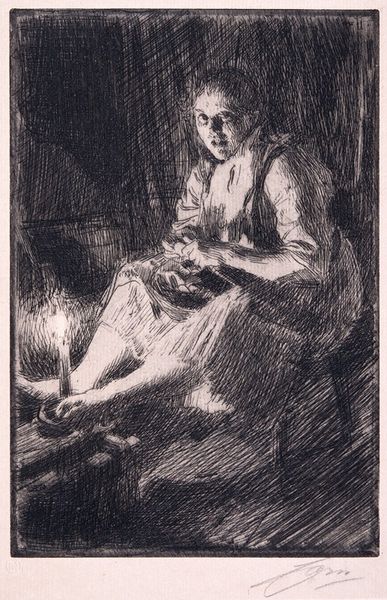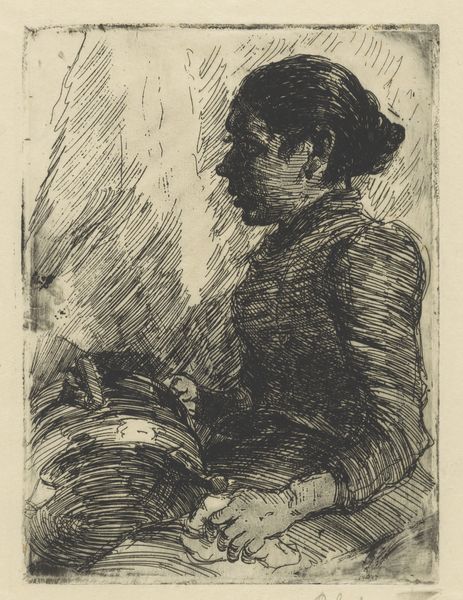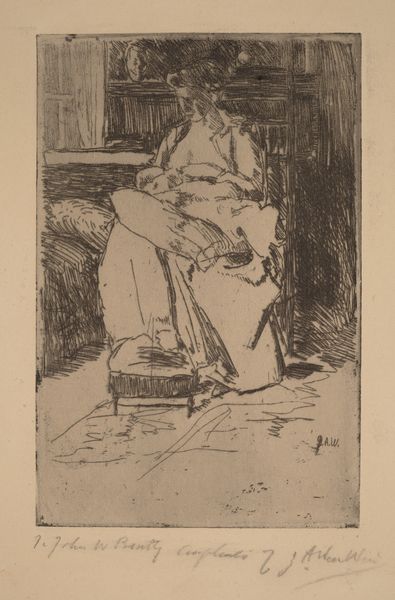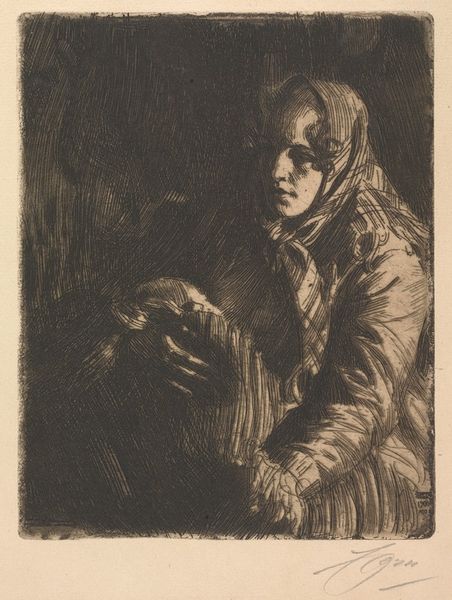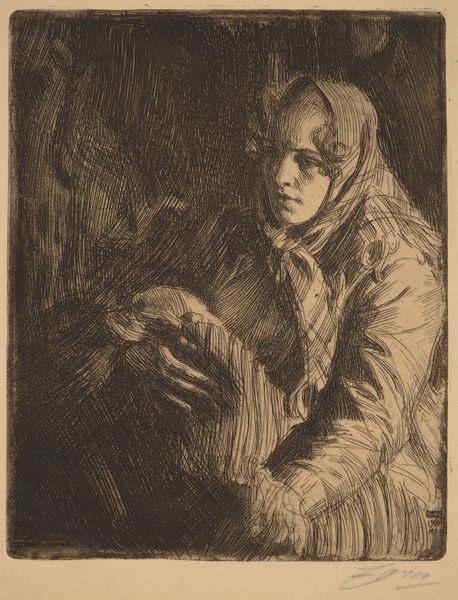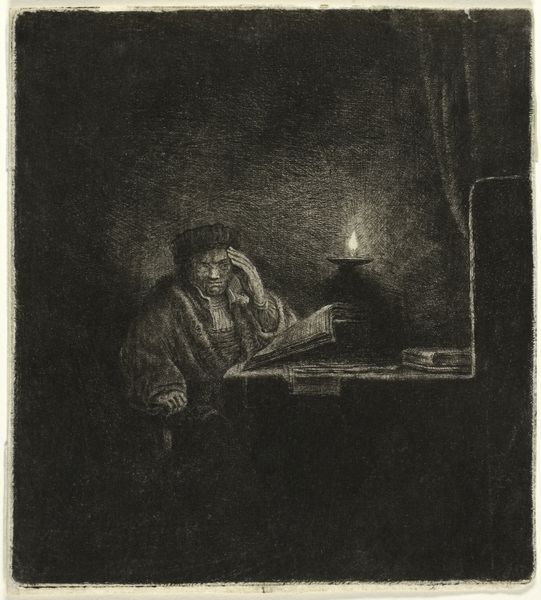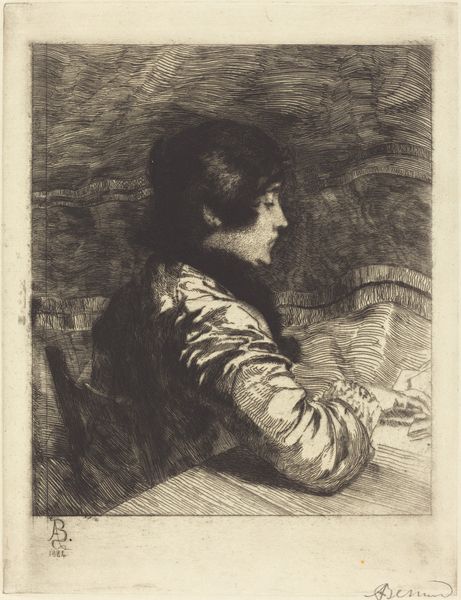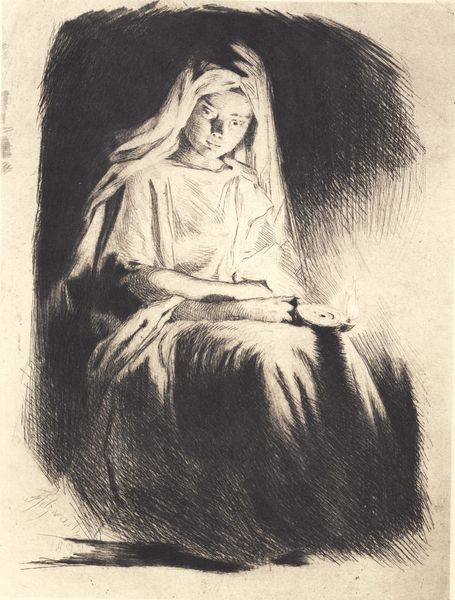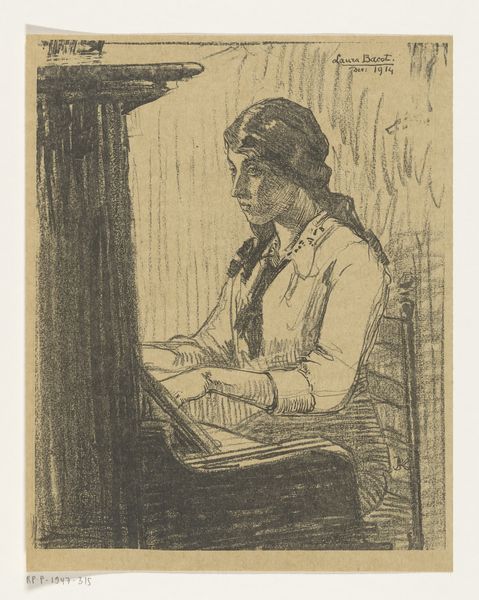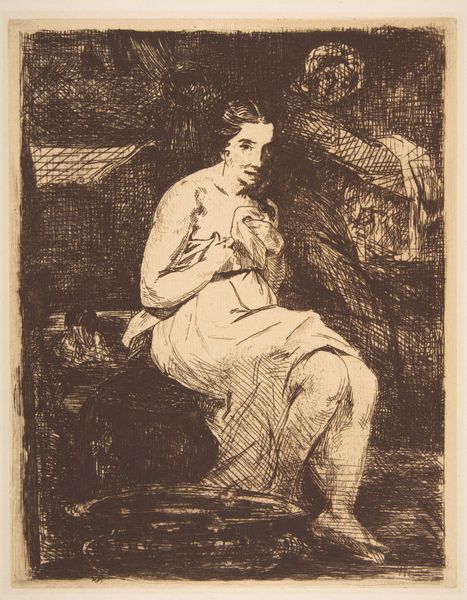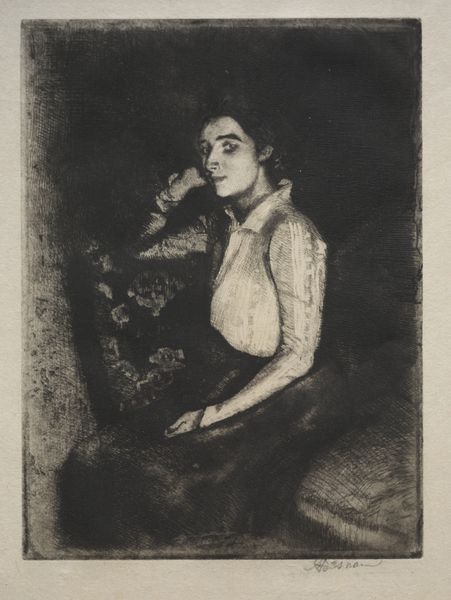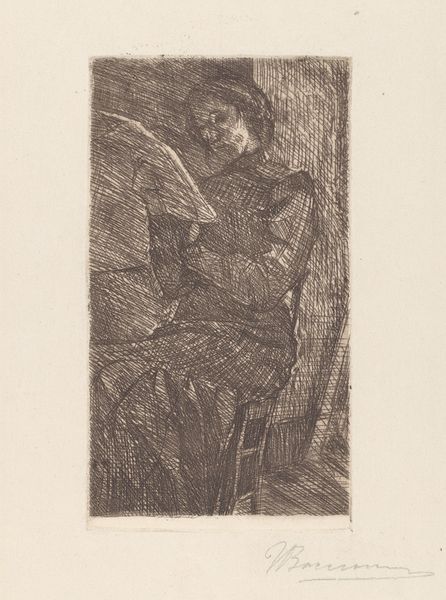
Dimensions: 23.7 x 16 cm
Copyright: Public domain
Curator: Let's turn our attention to Anders Zorn’s “Ida,” an etching from 1905. What strikes you immediately? Editor: The dramatic contrast. It’s almost entirely dark except for that flickering candlelight illuminating Ida's face. It’s a study in chiaroscuro. Curator: Yes, Zorn masterfully uses light and shadow here. As an etcher, Zorn played with the chemistry and craft of applying acid to the metal plate, where time determined the depth of the lines, ultimately controlling light and shadow and the distribution of ink on paper. Editor: I agree. Look at the way the light catches the planes of her face and the folds in her clothing. It draws my eye directly to her gaze. The strong diagonal lines that form the composition create a sense of movement. It gives this etching a dynamic, almost unsettled quality. Curator: Etching allowed for relative ease of mass production, widening the distribution and creating access to Zorn’s art. We should consider the socio-economic aspects of its accessibility; printed art like this brought images into the homes of a wider range of people, thereby creating more venues for Zorn's recognition and future commissions. Editor: Undoubtedly. It is through careful manipulation of these dark tones and their juxtaposition with brighter, lit areas that the artist compels viewers to observe his mastery of tone. Do you think the contrast might suggest an emotional quality, perhaps uncertainty, or hidden depths? Curator: Could be. Considering its date, this piece reflects the period’s increasing artistic emphasis on portraits of people engaged in ordinary moments and perhaps the artist trying to convey modern interiority. Etching could be deemed more “democratic” and of lower art status than paintings, so Zorn might be seen pushing up the status of etching through the intimate and thoughtful execution we see here. Editor: That reading certainly complicates matters, I had not considered the role of printing on consumer art trends. Ultimately, "Ida" stands as an image whose moodiness lies within its striking tonal juxtapositions. Curator: It also hints at changing dynamics in artistic expression. Thanks for the fresh insights.
Comments
No comments
Be the first to comment and join the conversation on the ultimate creative platform.
